
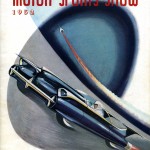
This Was The Cover Arbib Did For the 1952 International Motor Sports Show. I Love The Windscreen Up Front And The Jet Power at Rear.
Hi Gang…
We’ve talked about Strother MacMinn, Alexis de Sakhnoffsky, Hugh Jorgensen, and other designers. Now let’s talk about Richard Arbib. He designed the most fantastic concept car ideas I’ve seen, and even one of his futuristic designs was built – just not in fiberglass. More about that later.
Richard Arbib’s name has popped into my research into car design consistently. The first time I heard it was in connection with the school of auto design that he was running for Harley Earl at GM. I was in the process of tracking down the history of auto design schools in America, and was lucky to run into Elia “Russ” Russinoff of Detroit, Michigan. He was a retired auto designer who had some neat information to share with me.
It seems that there were very few schools of auto design in the postwar era. The Art Center in Los Angeles, California was present, and perhaps a few others, but the young men in postwar America were ready to go. I’m sure they wanted to design cars of the future – now – and Harley Earl was going to help them in every way.
Detroit Institute of Automobile Styling:
Immediately in the postwar years, GM started running small ads for the “Detroit Institute of Automobile Styling.” This was a correspondence course on automotive design, and the most promising of students in the course were invited to Detroit for interviews to become full-fledged employees.
Good friend Gary Smith of Dean’s Garage ran a piece on the “Detroit Institute of Automobile Styling” recently. Click here to review the article and be sure to read the comments at the bottom of the story too. Gary even has setup a download of the scanned book from Russinoff I sent to him (way to go Gary!!!).
Not a bad idea man, that Harley Earl was. And Richard Arbib was there too – and it was his handiwork on the stationary of the correspondence course materials that every student used. And Arbib ran the school for Earl too. See the page below. But it didn’t stop there.
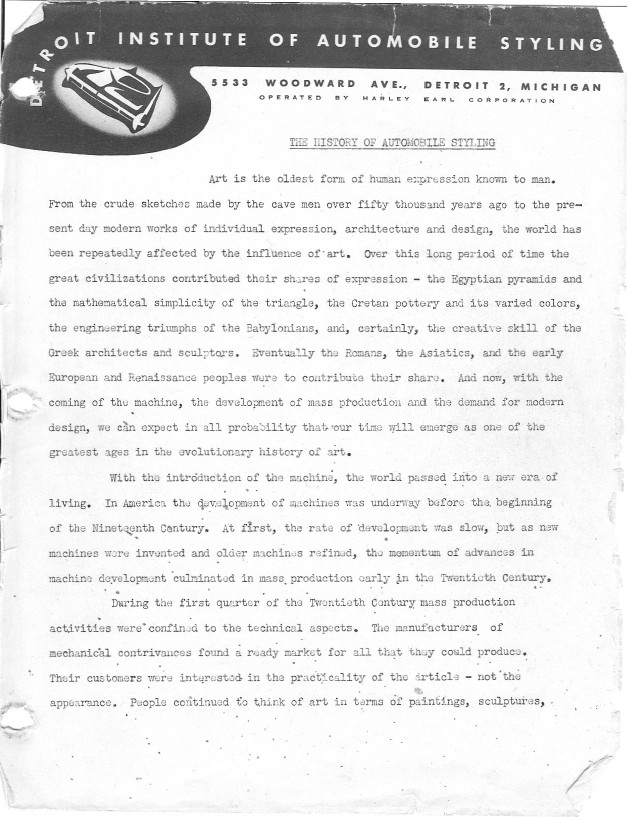
Here’s The First Page From The Harley Earl “Detroit Institute of Automobile Styling” Run By Richard Arbib – His Design Is At The Upper Corner of Many Pages.
All of you know how I love dream cars – heck there’s nothing special about that. All of you love ‘em too. And Richard Arbib’s work was over the top. He designed the fastest looking, jet plane styled, spaceship influenced, low-to-the-ground futuristic cars I had ever seen. But he was also a competent and schooled designer too.
Those of you who are Packard enthusiasts know of Arbib’s work as the designer of the Packard Pan-American sports convertible introduced in 1952. This was an all-metal car that was designed as a large but low grand American Boulevard Sports Car. Similar to what would be introduced by GM in the 1953 production line including the Cadillac Eldorado, Buick Skylark, and Olsmobile Fiesta.
The International Motor Sports Show: New York – 1952 and 1953
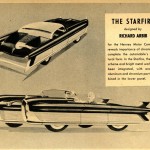
Here’s A Concept Shared by Arbib In The World Motor Sports Program For 1954. It Was Called “The Starfire” And Here Arbib Emphasized The Use of Chrome – Opposite To Our Recent Discussion of Dutch Darrin’s Lack of Use of it On His KF Darrin Sports Car.
So…it was exciting to come across a story by Arbib that was about… “Ricahrd Arbib.” It appeared in the the 1952 International Motor Sports Show program – that was owned and being promoted by Herb Shriner. Quite a show at the time in every way, and it opened to international acclaim.
Arbib wrote the article about himself in “third-person” narrative. It makes for interesting reading. Let’s take a look at what he had to say.
International Motor Sports Show: 1952
Official Program: Grand Central Palace, New York
A Car Is Born
By Richard Arbib
Dream cars and cars of the future have been shown to the public before. For the first time publicly anywhere, the Packard Pan-American sports convertible is being shown at the International Motor Sports Show. This is the first car of its type actually available to the American public on a limited production schedule.
This dream-car-come-true, embodying the low, sleek lines of Continental styling, is mounted on a standard American chassis which can be serviced anywhere throughout the country. The uppermost question in the mind of anyone who views this free-flowing design must be, “How did this car come about?” Primarily interested in an automobile which a select group of sportsmen and car buyers who demand something exclusive that is still within the realm of good taste, Packard combined with Henney Motor Company, custom body builders for nearly a century, to produce the prototype featured at this show.
As styling consultant to Henney, Richard Arbib, whose creative works have won him international renown within automotive circles, first set up the basic specifications for the styling solution represented by this car. Realizing that custom car tastes impose a limitation on decorative trim, the sculptural beauty of the Packard sports car was emphasized by reducing the height and simplifying all trim parts so that a minimum of chromium was necessary.
Such chrome parts as have been included represent a feeling of luxury without overplaying their role. The Henney Company, custom body builders to the President of the United States, have finished the car with the ultimate in craftsmanship in terms of finish, genuine leather accoutrements, and infinite attention to detail.
The man responsible for the birth of the idea that grew into the new Packard graduated from Pratt Institute, School of Industrial Design, and completed a one year course in automobile styling at General Motors Corporation. He worked for three years with the General Motors Styling Section in Detroit, during which time he covered the entire General Motors line, with particular attention to special, advance projects.
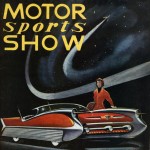
Here’s Arbib’s Work on the Cover of the International Motor Sports Show For 1953. What In The World Is Coming Out Of The Headlights? Let’s Build it Gang! At The Very Least, To Have One Of The Most Radical Front Windshields Ever Designed.
Also, while there, he directed a special projects studio for one year prior to World War II which employed a staff of six designers. He worked for three and a half years with Republic Aviation Corporation at Farmingdale, Long Island, employed as an armament specialist in the engineering department.
He received heavy background in all phases of engineering and rafting while there. Mr. Arbib was then appointed project engineer in charge of Robot Bomb design with 12 engineers under his direction. This project lasted for a two year period.
At the end of World War II, he returned to product styling, and worked for three and a half years with a major design studio in Detroit. While at this studio, Mr. Arbib directed a staff of ten designers and had complete charge of projects and model making on such items as Argus cameras, United States Rubber Tires, Union Pacific Train interiors, Benrus Watches, Evans Heaters, and so forth.
Since that time, other clients have included Simca Automobile Company, Swank, Inc., International Nickel Company, Tide Water Oil Company, and A.S. Cambell Company.
Summary:
It appears that only one Pan American car was built, and that was the showcar that debuted at the International Motor Sports Show in 1952. Exciting and heady times gang! Those of you wishing to learn more about the Packard Pan American, click here.
My favorite car of Arbib’s that was actually designed is the “Astra-Gnome” which was based on a Nash Metropolitan in 1956. More about that car in a future story. I’ll have more to share about Richard Arbib and his futuristic designs “in the future.” Maybe we should talk about Radebaugh too??? That’s for an entirely different day 🙂
Hope you enjoyed the story, and until next time…
Glass on gang…
Geoff
——————————————————————-
Click on the Images Below to View Larger Pictures
——————————————————————-
- Here’s Arbib’s Work on the Cover of the International Motor Sports Show For 1953. What In The World Is Coming Out Of The Headlights? Let’s Build it Gang! At The Very Least, To Have One Of The Most Radical Front Windshields Ever Designed.
- This Was The Cover Arbib Did For the 1952 International Motor Sports Show. I Love The Windscreen Up Front And The Jet Power at Rear.
- Here’s A Concept Shared by Arbib In The World Motor Sports Program For 1954. It Was Called “The Starfire” And Here Arbib Emphasized The Use of Chrome – Opposite To Our Recent Discussion of Dutch Darrin’s Lack of Use of it On His KF Darrin Sports Car.
- Here’s The First Page From The Harley Earl “Detroit Institute of Automobile Styling” Run By Richard Arbib – His Design Is At The Upper Corner of Many Pages.
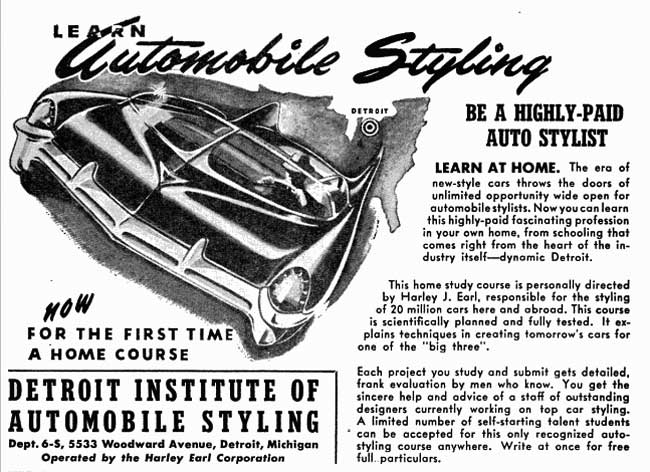

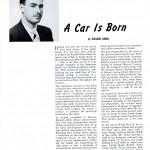
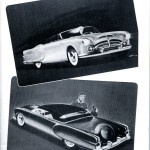
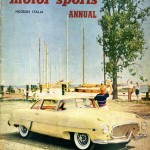
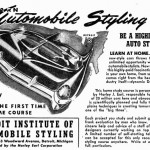
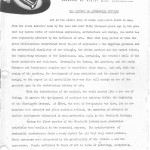
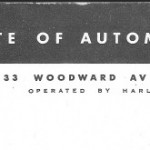

Oh, Geoff… actually there were six Packard Pan Americans built, not just one.
Fantastic article and beautifully written, Mr. Hacker. Richard Arbib was my grandfather. We miss him terribly, so it’s always nice to see someone like you who appreciates his work write something nice about him. Thank you!
It would be nice to know if you or your family have any photos Richard with his Packard Monte Carlos or Pan American… or just photos of the cars. I am presently working on very extensive histories of both. Thanks!
My cousin Michelle !
I have been researching Uncle Richard on and off for many years. I became a Design Engineer myself, and wish I could have spent more time with him…
Wonderfully Over the Top, the designs are true flights of fancy… I do not think any young boy did not dream of driving these fanciful designs when they saw them in books and magazines.
They make the outrageous Spohn designs most of which I like very much seem almost ordinary… if that is possible…
Wow. I think Geoff and Herb Shriner would have gotten along famously. He also had an eye for the unique, unusual, and beautiful. Herb also owned a famous streamlined car. It was the 1938 Phantom Corsair. Designed by Rusty Heinz, it appeared in the 1938 movie ‘The Young At Heart’ ,staring Douglas Fairbanks. They called it the Flying Wombat in the movie.
I found o photo of it in a 1953 CARS magazine, amongst severl other famous cars (fiberglass and otherwise), like the Kaiser Darrin, Excalibur J, and I believe the same magazine, farther back, has a photo of Eric Erwins car. Raymond C. Martin, friend of Erwin, mailed in the photo about it.
The caption next to the Phantom Corsair indicates that Shriner calls it “The Monster” and it cost $30,000 to build.
Geoff – Nice article! Weren’t some of Arbib’s designs on some of the Tops gum cards?
Glenn Brummer